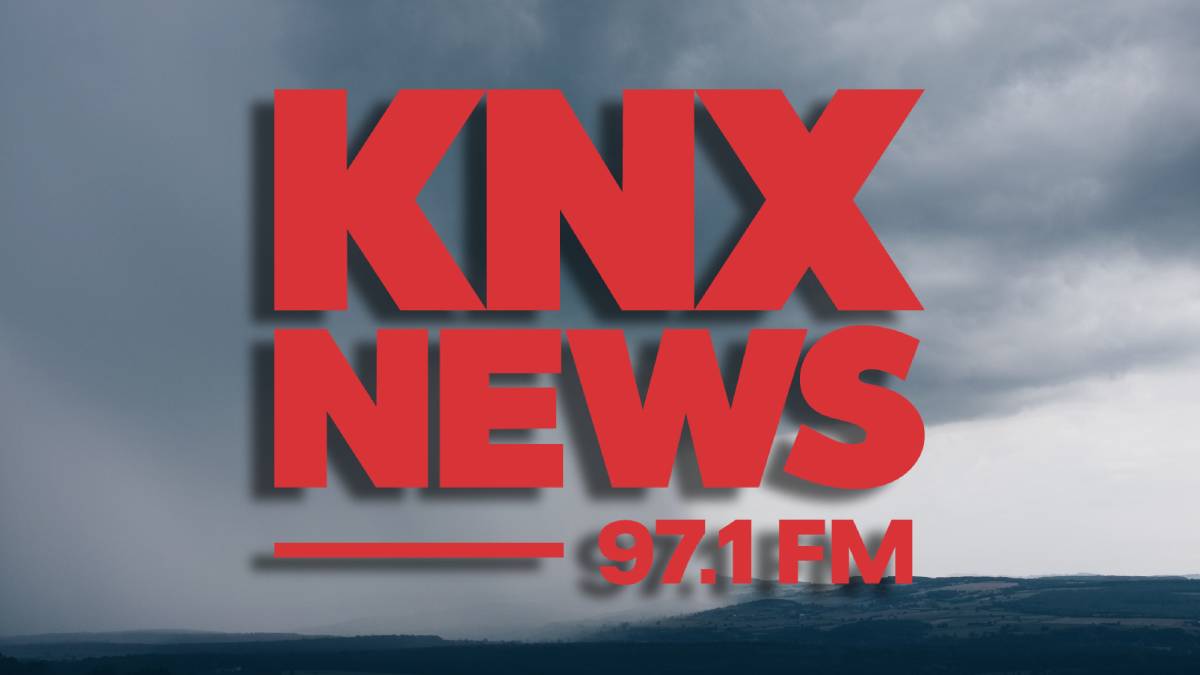For decades, Audacy’s KNX News 97.1 FM in Los Angeles has been the only source of live and local information 24 hours a day, 365 days a year.
The station employs about 55 people who have dedicated their lives to covering Southern California the way that nobody else can. As reporters, producers, editors, anchors, and hosts were game-planning to provide wall-to-wall coverage of Tropical Storm Hilary on Sunday, a magnitude 5.1 earthquake struck in Ventura County, rattling the nerves of millions of Californians and sending the KNX newsroom into overdrive.
The station is well-equipped to handle natural disasters, and KNX News Director of News and Programming Alex Silverman is the perfect person to lead the operation.
As a manager, he leads an elite team with deep connections to the community to keep his Murrow award-winning newsroom operating at its best.
Silverman’s newsroom operates like a symphony, with producers and editors in the hub ensuring all information reaches the right places. Production assistants coordinate live elements with reporters in the field and guests calling in. The assistants also gather sound from various sources.
While writers ensure information is up-to-date, hosts handle their assigned tasks and check social accounts for the latest developments in stories. The KNX News team uses cloud-based newsroom technology to communicate. He emphasized how proud he was of his team during its recent coverage of Tropical Storm Hilary and the unexpected 5.1 magnitude earthquake.
Alex chatted with Barrett News Media about KNX’s uniqueness, similarities with previous markets, KNX News’s impact on Southern California, and how the station maintains its trusted news status in an ever-increasingly politicized world.
Ryan Hedrick: KNX News reported on the effects of Tropical Storm Hilary. What was your coverage plan, and what made it successful?
Alex Silverman: Unlike most disasters that we experience from time to time in Southern California, we had advance notice for this one. When there is a wildfire or an earthquake, you get very little to spring into action. Our team is used to that. Our team is used to jumping into things and going right out there. Having a couple of days to prepare for this was a huge benefit. Our plans kind of adjusted as the forecast changed.
We were talking to meteorologists, both internally — who we work with all the time — and externally. We talked to some meteorologists who have more experience covering tropical events on the East Coast. Because while you have hurricanes in the Pacific, they don’t usually end up hitting land. In fact, there hadn’t been one to hit the LA or the San Diego metros in 84 years, so this was an unprecedented event in anybody’s lifetime.
We geared up. We put a plan in place to bring our weekday anchors and hosts in on Sunday. Once we realized it was going to hit a little bit earlier than we expected, we moved that whole plan up. We had all our reporters on standby, we had a plan based on the forecast to send people out to areas because we didn’t know if the roads were going to be passable once the storm was underway.
We had somebody out in the Coachella Valley in Palm Springs, we had somebody up in the Antelope Valley (the Northern part of LA County), and we had people all over the rest of the area to make sure we could bring the information to people should they end up losing power and connectivity because we knew they were going to end up depending on us and that plan really worked out.
RH: How many reporters, anchors, hosts, and producers do you have working for you at KNX News?
AS: We have a total newsroom staff of about 55 people. We have people who do various roles. We have six full-time reporters, but we have other people in the newsroom who will jump in and do reporting. I would consider all our anchors and hosts reporters as well.
I also consider our producers and our editors to be reporters because they are constantly making phone calls from the newsroom, making sure the information is confirmed, and making sure we can get guests on the air.
So, we have those reporters in the field, but we also had our producers getting the Mayor of Palm Springs, regular people who were calling the newsroom. That’s another thing that happens when these big events occur. People in the community know that we are a source of information, so they call us.
We were also soliciting phone calls, and so people were calling in and leaving messages, and we were calling those people back to gather reports to really get a sense of what was going on throughout the area. Just in LA and Orange Counties, we have more than 13 million people. It’s an incredibly diverse, enormous, and widespread region geographically.
If I had 30 reporters, you wouldn’t be able to get a sense of what was going on, so we depended on our audience for a lot of that, too.
RH: You have worked in New York, Philadelphia, and Los Angeles. Are there any similarities in how news is covered and reported in those markets?
AS: They are similar in a lot of ways. I had the benefit of having done most jobs in the newsroom at some point in my career. I was a reporter and anchor for a long time, so I always think like a reporter and anchor in terms of how we deliver information to the audience.
The general strategy of how we’re covering the news is similar, but again, in Los Angeles, you have an enormous region geographically, and you have differences there, especially in terms of the weather. One part of the region can be vastly different on any given day from what’s happening in another part of the area, so that’s something you have to think about in terms of staffing.
In terms of covering the news itself, you have your contacts, you know who to call in any situation, you know how to respond when something comes to your attention, how to verify the information, and get it on the air in a timely way. That really doesn’t change from market to market.
It was a benefit having been particularly in New York during Hurricane Sandy, as a reporter, because that was also a region at the time, not used to dealing with tropical events. Having been through that, having been through how the region handled it, gave me a perspective that was valuable in preparing for this storm.
RH: Could you explain the impact of KNX News on Los Angeles and its role in Southern California media?
AS: When it comes to local, audio, and news, we are the only player in town when it comes to being on-air 24/7. People in the market know that when something is happening, we are the ones that you can turn on, whatever platform it is, FM/AM, smart speakers, the Audacy app, at any moment, you see smoke on the horizon, you see the weather coming in, you see something happening that is major in your community, you can turn us on any time of the day or night, and we’re going to be telling you what it is.
If you’re on the freeway and you’re stuck in an enormous traffic jam on the 101, and you want to know what the hell is causing it, we’re going to tell you. Your traffic app is going to show you a big red line, but it’s not going to tell you that a woman gave birth on the freeway or whatever might be causing it. That is a level of community connection that nobody else in the market has.
There are other sources of news, there are other sources of information, but nobody is as immediate and 24/7 local as we are at KNX, and we’re proud of that. That’s how we’ve been able to, over the past 55 years, create an incredible connection with communities that are geographically diverse.
RH: How does KNX News maintain neutrality and public trust during times of opinion polarization and skewed reporting?
AS: When we do research, we see that, and it really stands out. In an environment where there’s political division, people see KNX as rising above challenges they see with the media generally to the extent that they see them. That’s a powerful position to have in 2023, especially with an election coming up and when it’s hard to break through in a fragmented media environment.
We do it just by making clear where we are getting our information from, and when we have a story that is politically charged, we make sure to present all sides. It’s not always about having one side and then the other.
It’s about making sure we get the context in which the story occurs. We also focus on local stories. We also make sure the stories are affecting our communities. If there’s a major national political story, we talk about how it’s affecting communities around the LA area.
We tell you where this fits in the context of Los Angeles and the context of history, and that’s how we do it. Every day, we strive to make sure our stories are as fair as possible, and that’s really all we can do.
RH: Is there an earthquake contingency plan for KNX News studios in case of destruction or inaccessibility?
AS: A friend in radio sent me from across the country sent me just the other day, a copy of KNX’s earthquake plans from 1989, which he happened to have, which was four and a half years before the Northridge quake in 1994 (6.7 magnitude and struck at 4:30 a.m.).
We had a plan; we’ve been updating it ever since, and we definitely have contingencies in place should there be an issue in our studios. We also have contacts on file so that the minute an earthquake happens, we’ll be able to reach the people that we need to get on the air to provide the information.
You know what also happens when there’s an earthquake (a 5.1 magnitude quake struck LA last week during a tropical storm) immediately. The phones light up at KNX. We don’t normally take calls on the air on a daily basis, but the second there’s an earthquake, there are people all over the region that the first thing they do is they call KNX, and we put them live on the air to ask “What did you feel? And where?”
We did that during the middle of the tropical storm and had to balance those two things, we know that the second an earthquake happens, people are going to call us and tell us where they felt it, and we can sort of cross-reference that information with the reports we’re seeing from the USGS (United States Geological Survey) and that gives us a real wealth of data to sort of go on in the initial moments after something happens to see how bad it is, where the damage is.
That helps us dispatch our reporters to the right places. That’s how it works. It really involves the community in how we cover these things.









